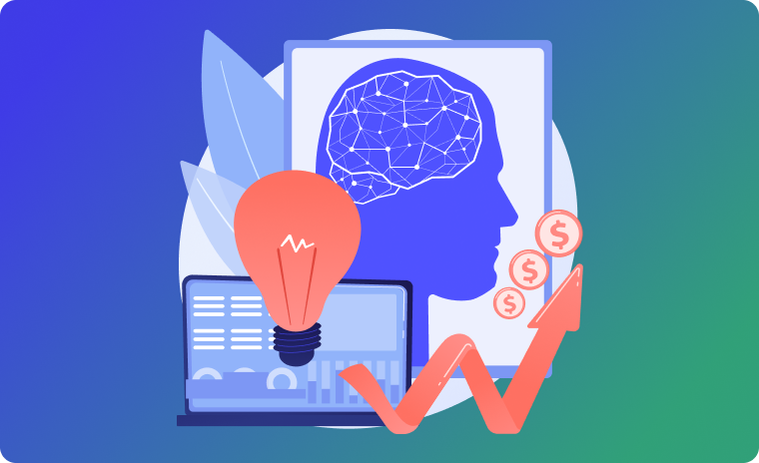Can No-code Democratize AI, too?
Artificial intelligence (AI) has remained somewhat of an enigma in the tech industry since its inception. It was initially touted as the next breakthrough that would take humanity into a new age. However, the evidence of those transformative capabilities has been scant so far.
The real-life experience with AI has produced much more modest results than was promised at the beginning. For example, coders using AI pair programming tools such as Open AI Codex or Github Copilot realized that these tools were far from taking over developer duties. They provided broken code; their outputs were sometimes biased, discriminatory, and offensive; and vetting their suggestions actually slowed down the coding process.
AI might have fallen short of the initial hype, but there are industries where it has made a difference. The finance industry has been at the forefront of AI adoption.
AI in the finance industry
Banks have been making heavy use of a particular technology lately: Natural language processing (NLP). This technology helps users create chatbots that can understand human language and generate replies as a human would. Thanks to these chatbots, banks can provide customers with personalized service 24/7, serve more customers without increasing their headcount, and improve their bottom line.
Machine learning models, too, made their way into the technology stack of financial institutions. These tools help decision-makers make better decisions regarding lending money and managing risks.
Another area where AI has proved effective for financial institutions is security. AI is great at pattern recognition, and it can be trained to recognize irregularities in financial transactions. This capability makes it a perfect fit for banks trying to prevent fraud and cyberattacks.
Two hurdles to overcome
However, in the grand scheme of things, very few industries have been able to adopt AI to the extent that the banking industry has. Despite all the fanfare and buzz surrounding AI, the rollout has been slower than expected. AI integrations currently lag behind projections. A study commissioned by IBM surveyed IT professionals from 5,501 companies around the world and produced insights that shed light on the rate of AI adoption:
- 43 percent of the respondents said that their companies were exploring AI,
- Only 31 percent reported having already deployed AI at their companies.
Introducing AI into an organization is no easy task, apparently. The IT professionals responding to the above mentioned IBM study cite two particular challenges that slow down the AI rollout:
- Limited availability of AI expertise (39 percent)
- Lack of tools or platforms for developing AI models (28 percent)
These two barriers to AI adoption illustrate how similar the current state of the AI domain is to that of app development a few years back. The developer shortage that plagued app development is, this time, replaced by the scarcity of experts with degrees in data science, computer science, or statistics. The problem may be all the more severe today because some AI projects require leadership from experts with Ph.D. degrees, who are not easy to find.
Enterprises are throwing big bucks at AI experts to lure them and carry on with their projects. A solution to the second challenge, the lack of AI-specific tools or platforms, can actually help with the scarcity of AI experts. Once capable AI platforms are introduced, companies (especially startups and SMBs) will be able to raise their own “citizen AI engineers” in the mold of citizen developers. Instead of relying on off-the-shelf solutions or chasing overqualified experts, these companies will be able to develop their own models, test their ideas, and find the best solutions for their use cases.
No-code can do it again
What fueled the interest in no-code/low-code app development platforms was the shortage of developers at a time when digitalization was going on at full speed, and software was eating the world. Enterprises were offering talented developers high salaries and perks, effectively pricing SMBs and startups out of the job market. No-code platforms filled a void here, helping companies develop apps without having to hire expensive coders or outsource the development to third parties.
The AI domain is slated to go through a similar experience soon if it is to live up to the hype surrounding it. AI should become affordable for and accessible to the masses to become the transformative technology everyone hopes it can be. The prime candidate for this job today is the no-code technology. Just like it has helped bridge the gap between the supply of and the demand for developers, no-code can fill in for data scientists and enable smaller players in the market to benefit from AI technology.
The idea of no-code AI helps us realize once again what the no-code movement is all about: Democratization of software usage and empowering the masses. It was about democratizing app development and web design for the last few years. Now the focus is on democratizing AI deployment. With software becoming indispensable to how people and businesses operate, we need to find a way to multiply the number of people that can create software and deploy AI. Having proven its mettle in app development, no-code is the most promising way to do that.




 Please
fill out this field
Please
fill out this field













